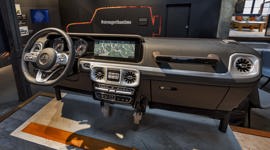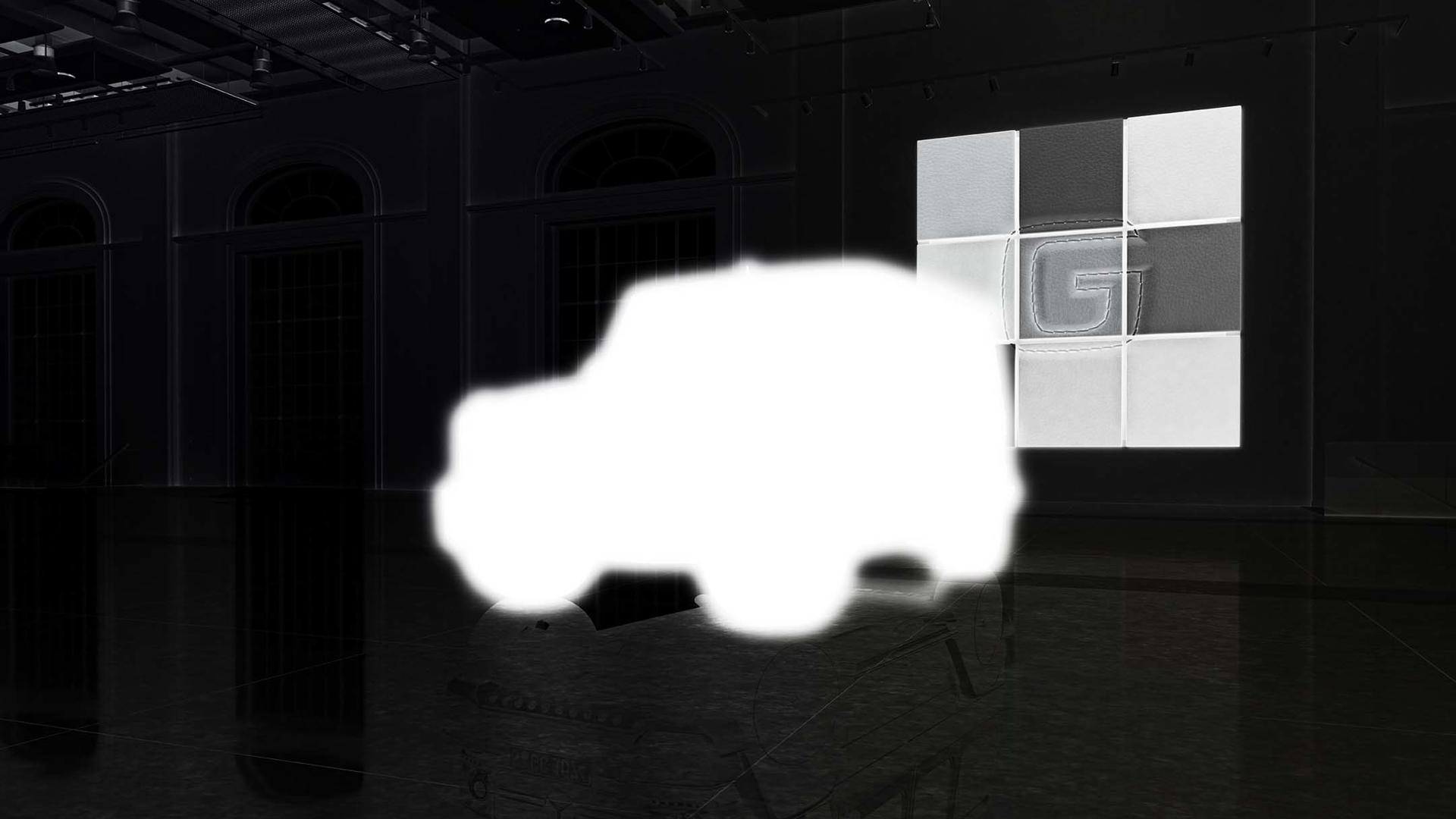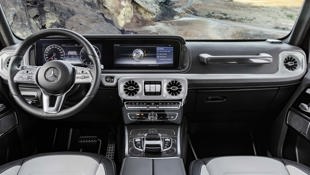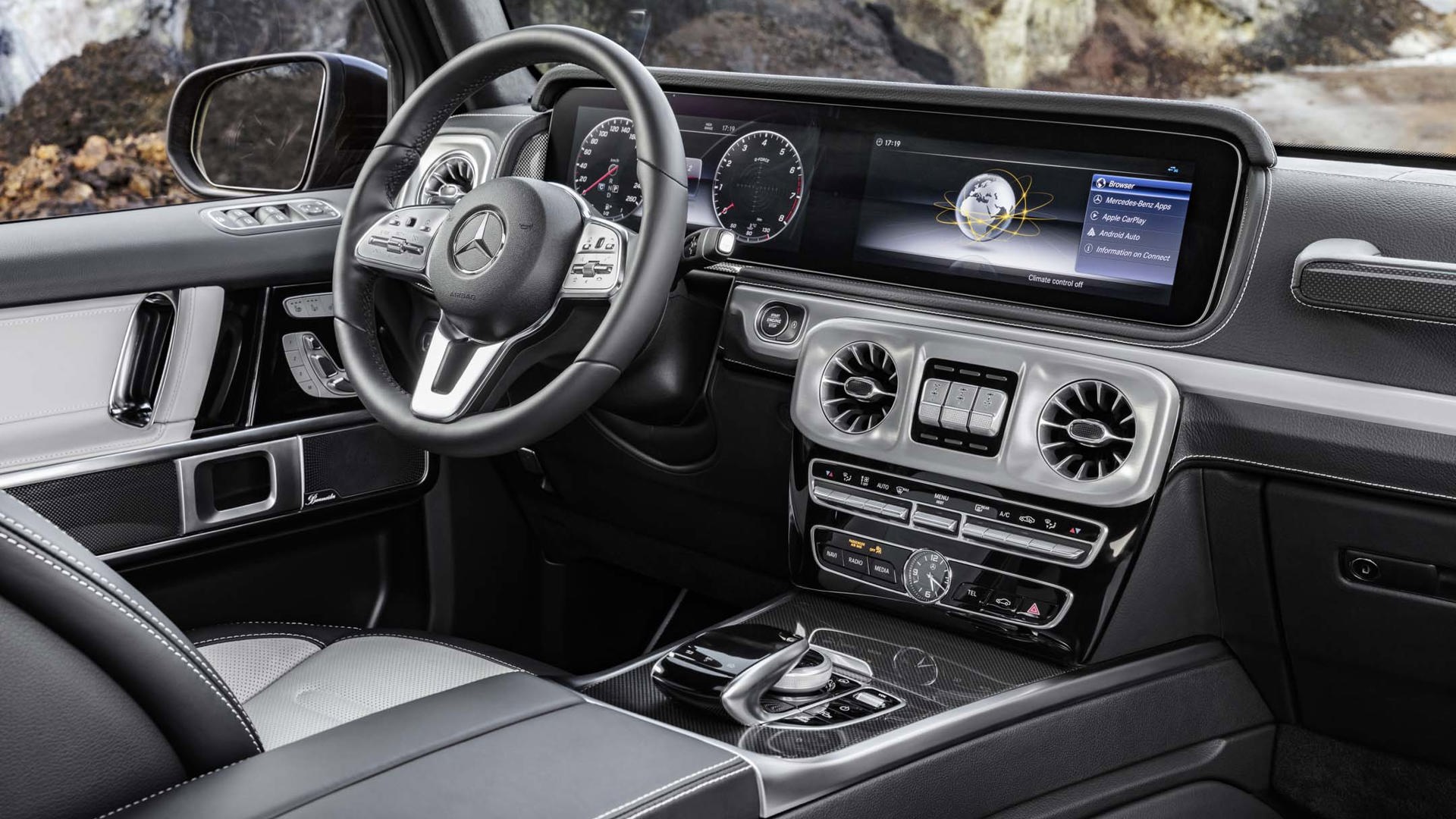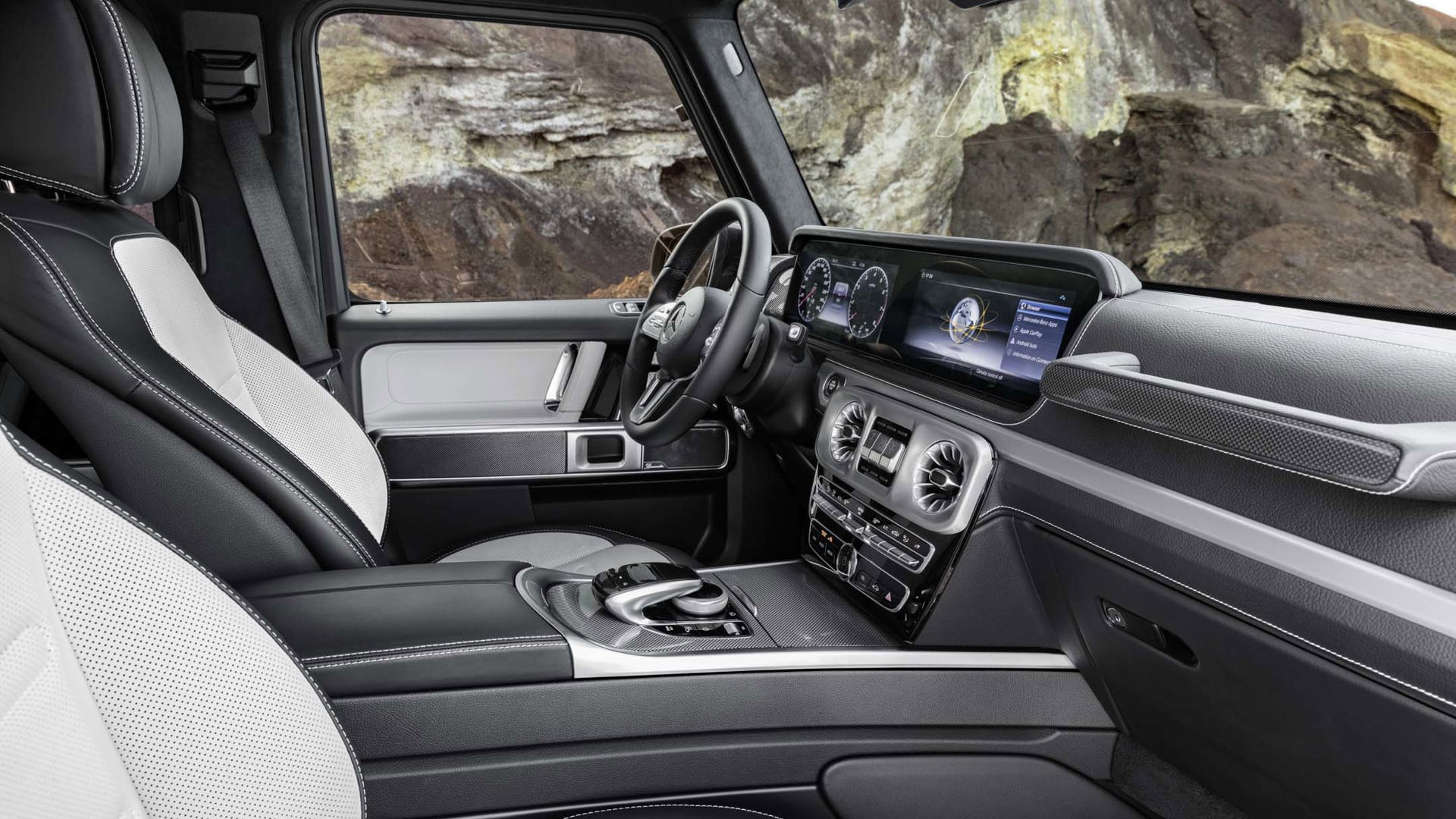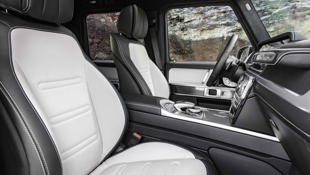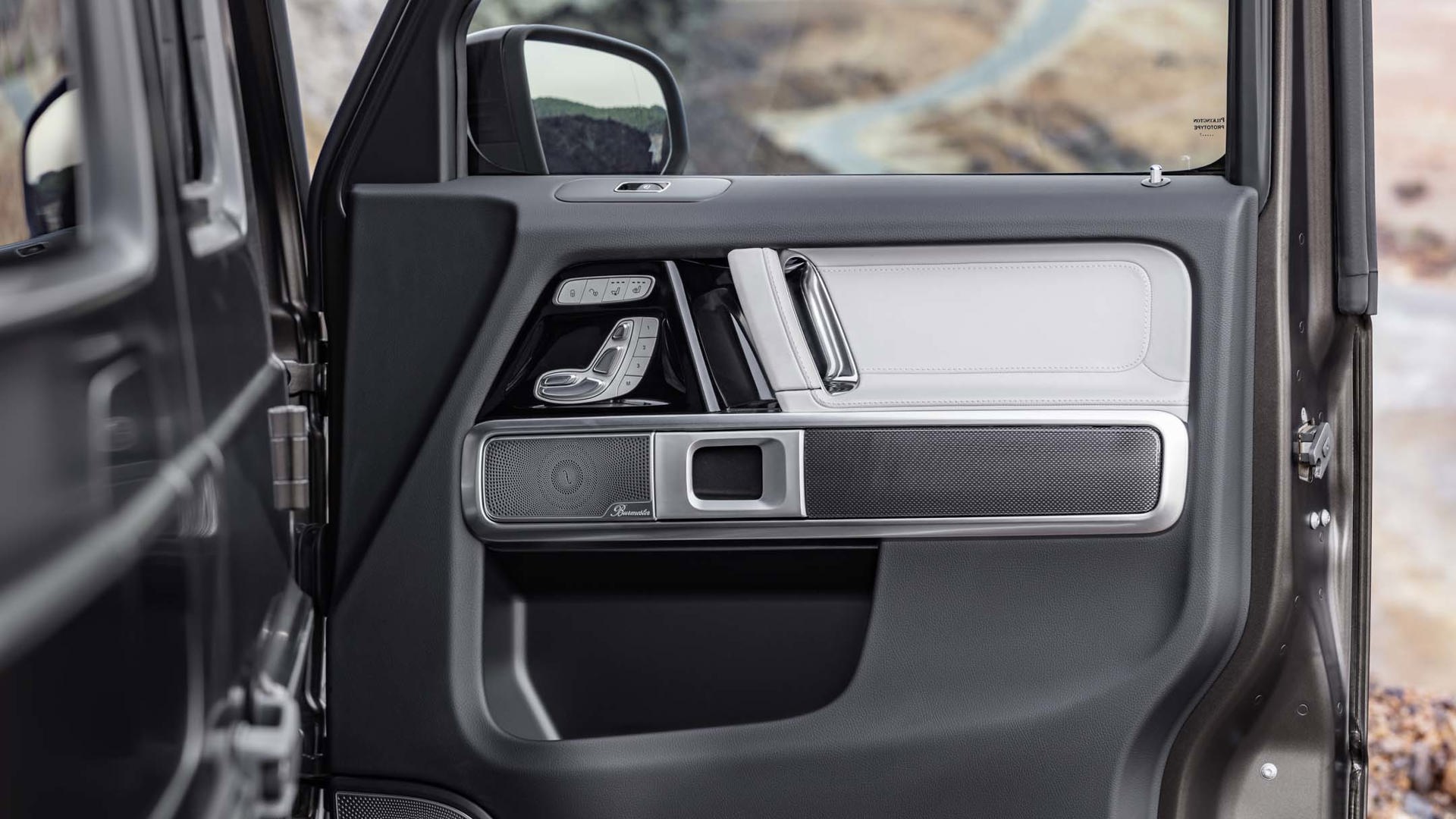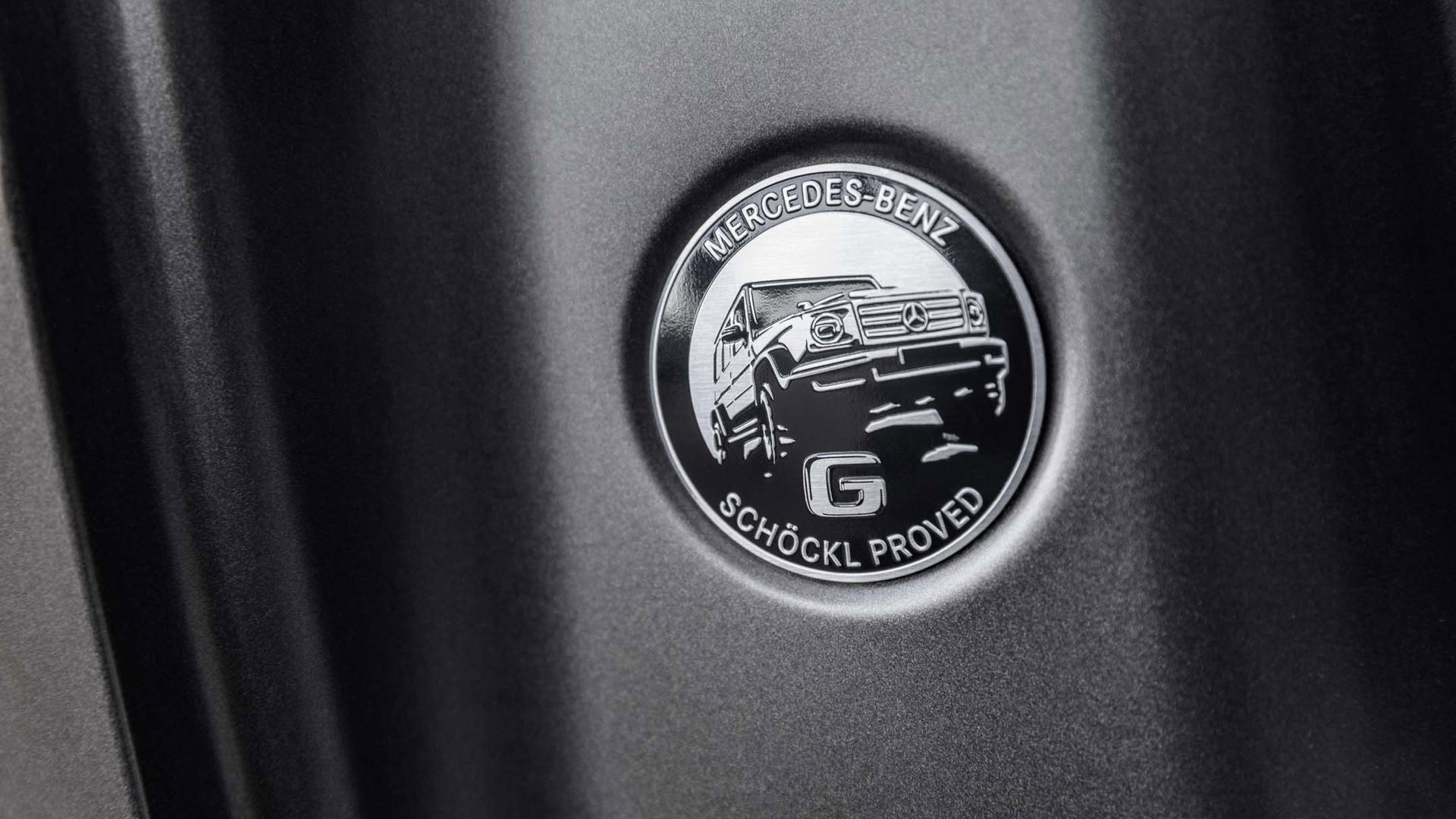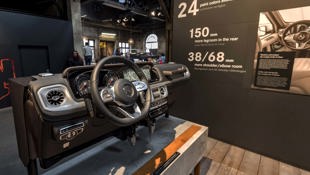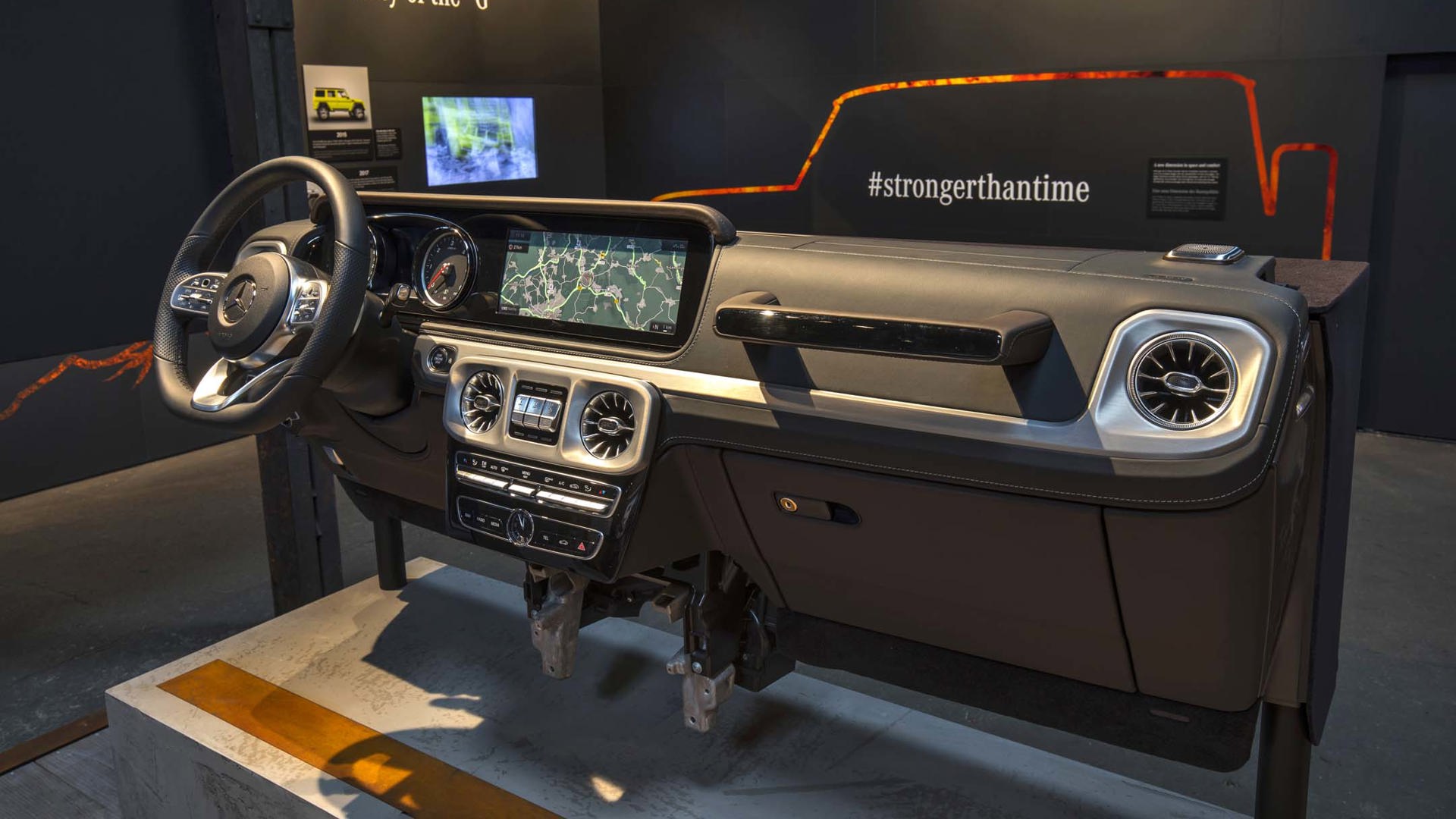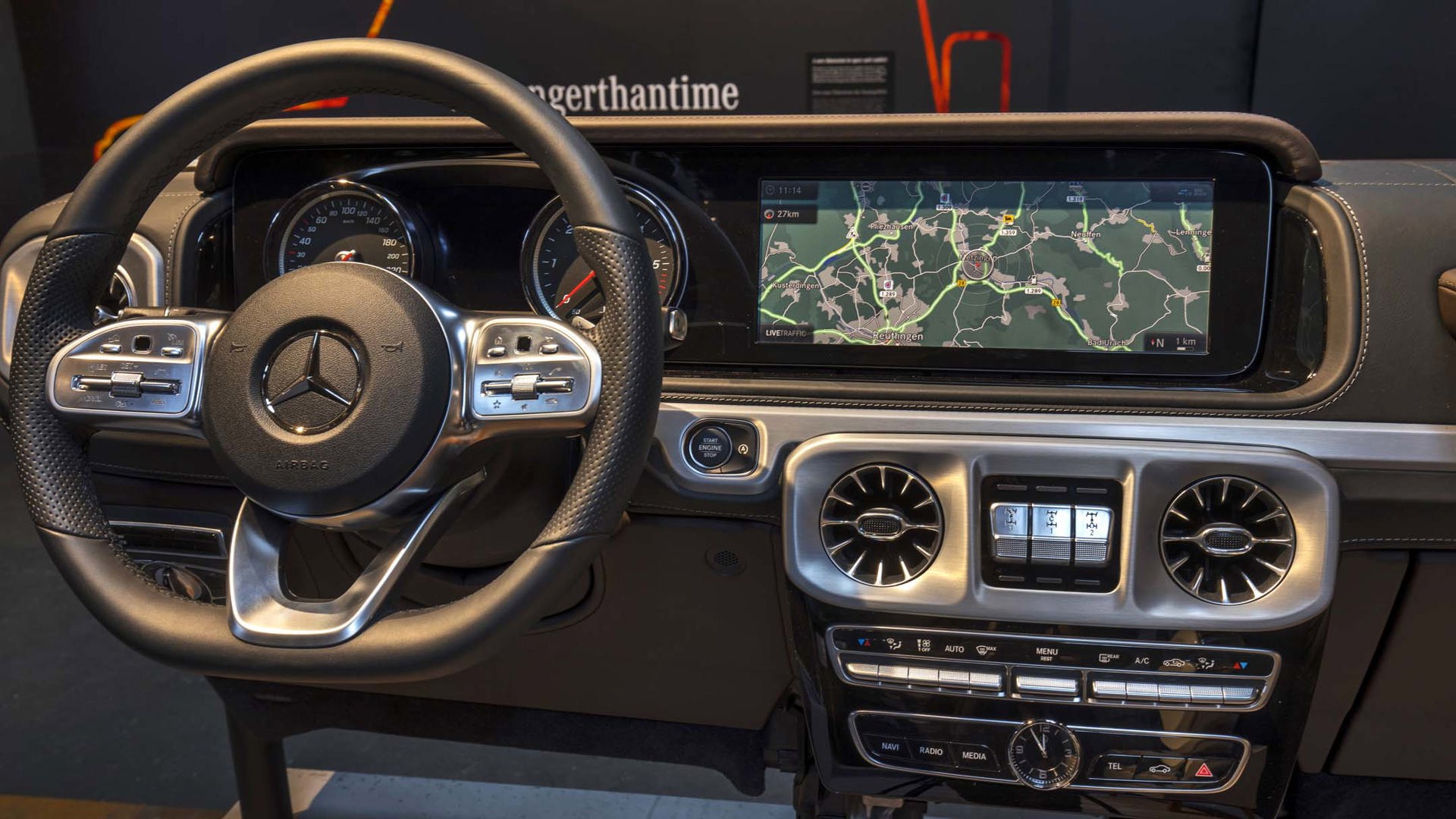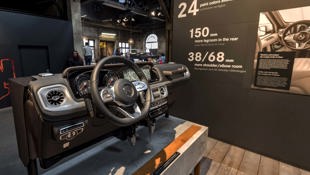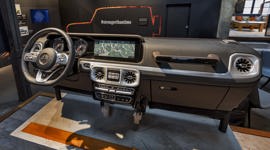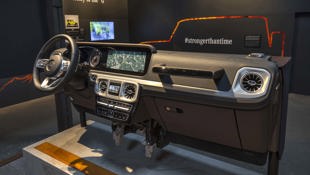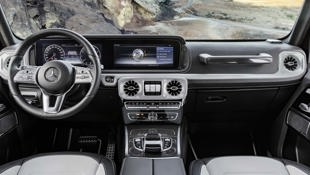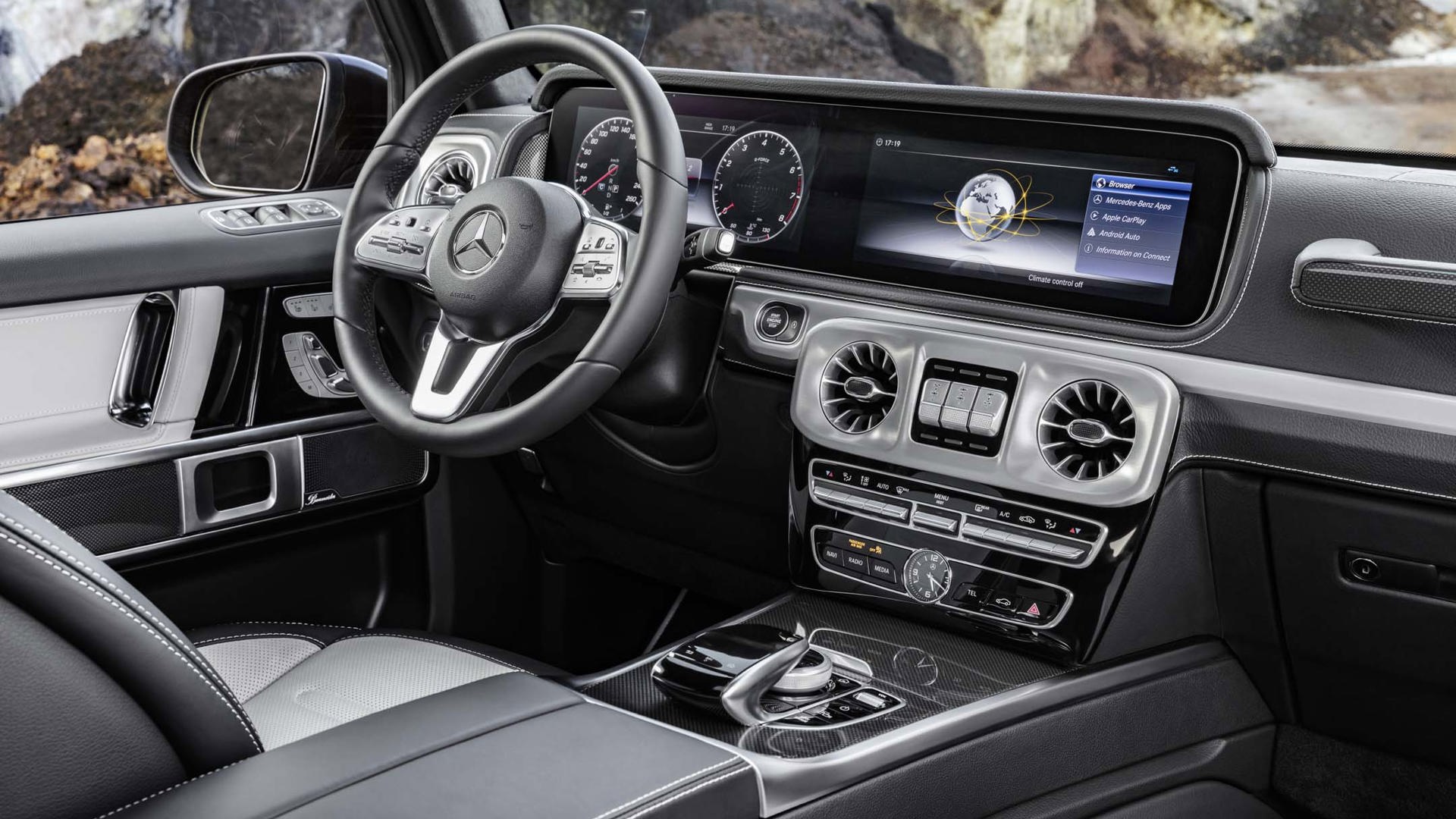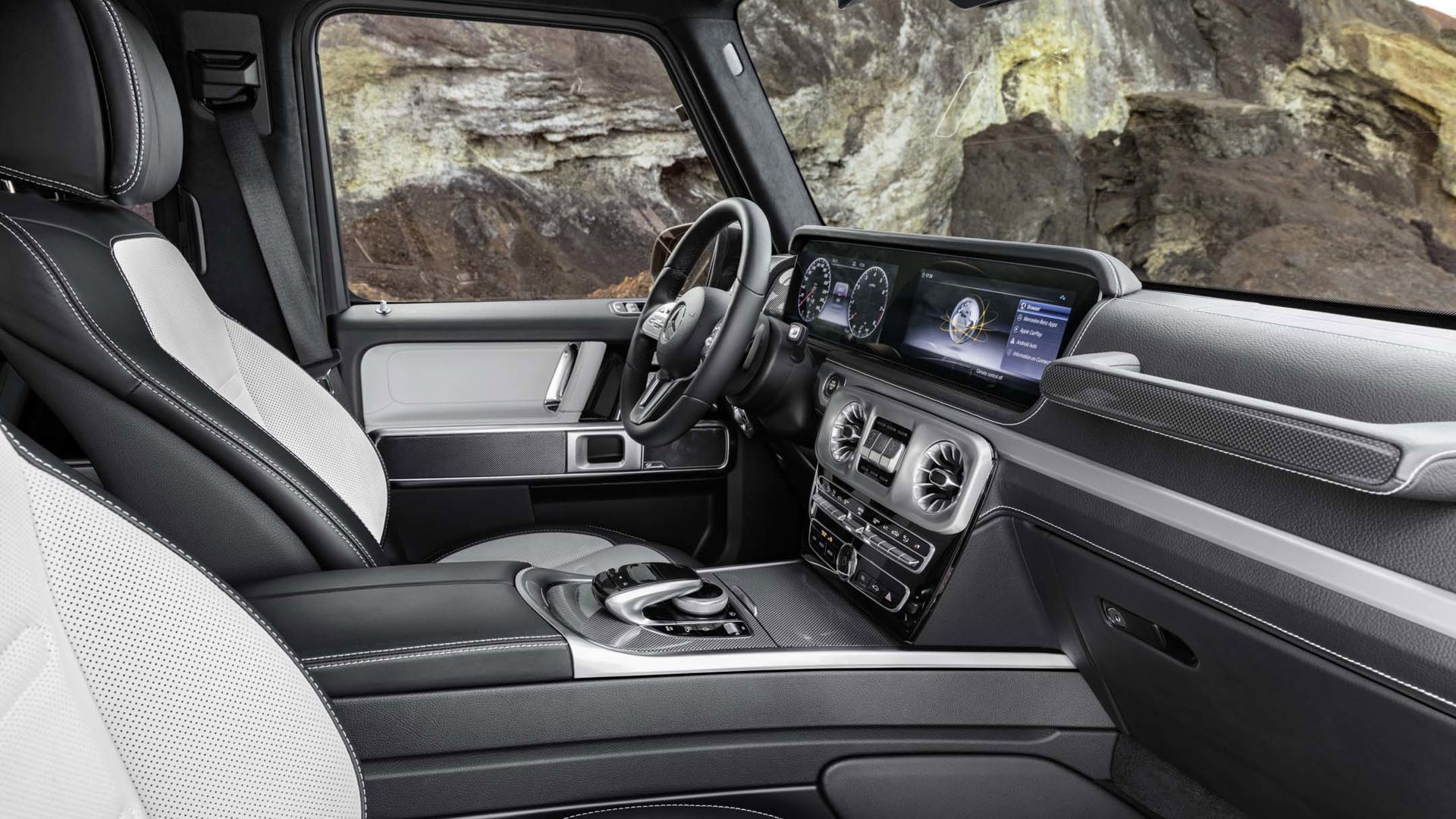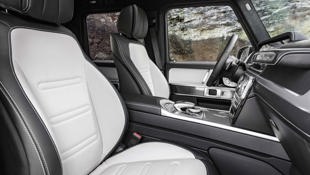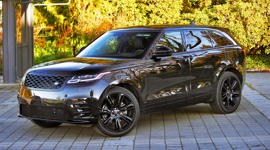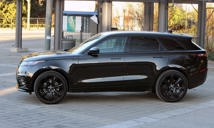Automakers protect their secrets with a state department’s zeal. It’s not uncommon for us to sign embargo contracts, turn in our cameras, and have our cellphones sealed with opaque tape before being permitted to attend an advance product reveal.
While I can tell you what it was like to sit inside – the sight, the feel, and even the smell – I have no idea what the new G-Wagen really looks like.
But this was an entirely new one on me.
In groups of four, we were escorted into a small, blacked-out room for our first three-dimensional encounter with the new 2019 Mercedes-Benz G-Class utility vehicle. Eyes adjusting to the gloom, I could just make out its blocky profile – a sheet draped over the hood obscuring the front fascia.
We were permitted however, to climb aboard; a company minion at the head and tail of our small convoy effectively herding us into the compartment without any chance of a stolen peek under the sheet. Therefore, while I can tell you what it was like to sit inside – the sight, the feel, and even the smell – I have no idea what the new G-Wagen really looks like.
Clandestine as that sounds, Mercedes’ caution surrounding all things G-Wagen is understandable; as one of the world’s most iconic off-roaders for nearly 40 years, any alteration to such a winning formula must be undertaken with utmost consideration. More than 300,000 Geländewagens have been purchased since its 1979 debut and this is its first major overhauls in four decades.
From what we could tell from our brief foray into the secret chamber, the upcoming G-Class will retain its iconic boxy shape but is significantly wider than the model it replaces – up to four inches. It also appears shorter. The extra width will not only give it more stability, it reportedly makes room for a new suspension setup.
The exposed portions of the vehicle were familiar, the distinctive door handle and tailgate-mounted spare wheel – and we’re going to surmise that it will retain its characteristic round headlamps, since we were instructed to note the corresponding shape of the air vents which apparently pays them homage. The indicator lights too have their design repeated in the shape of the speakers. The doors close with a solid thunk.
Interior space has been increased with 38 mm added to front legroom; and a noticeable 150 mm for rear passengers. Shoulder and elbow room between passengers goes up, and , the seats have gone through a wonderful transformation that cradles the backside while offering adjustable support – in fact Mercedes claims the Active Multicontour Seat packages has been endorsed by the German spinal health organization.
There’s a noticeable uptick in luxuriousness despite our brief time spent inside, with open-pore wood trim, brushed metal and real carbon-fibre trim.
While black, nut brown, or macchiato (beige) leather is standard, buyers can choose to upgrade to an Exclusive Package offering seven colours of Nappa leather, and black Designo microfibre roof liner or Exclusive Interior Plus which adds diamond-pattern quilting to the seats, extra colours pulled from the Mercedes Designo portfolio, more leather trim on such surfaces as door, instrument panel, and centre console. It’s even possible now to order the entire cabin in macchiato beige from floor to ceiling – it’s unlikely that one will ever see the Rubicon trail.
The AMG appearance line can be added to any of these trim levels – you can choose a flat-bottomed AMG sport wheel (available for the first time on the G-Wagen) and black sport seats with contrasting red stitching to go with your Exclusive Plus design package.
Everywhere there are now thoughtful cubbies, upholders, and illuminated compartments. The rear doors can each hold a one-litre bottle.
The 60/40 rear seats fold flat, and there’s a tailgate assist that now makes opening it a light-handed affair – although in our current politically charged climate, the Mercedes minions should probably have refrained from saying that it was designed to be “much easier for the ladies”. The lift-over has been reduced, making it a lot easier to stow cargo.
The dash and instrument panels are all-new – although the classic analogue round dials have been retained as standard. But the virtual-cockpit-type display also offered in the S-Class is available and features a large virtual instrument screen in front of the driver, and another central display above the centre console. Two enormous 12.3-inch displays beneath a single glass cover can be configured in three different styles; “Classic”, “Sport”, and “Progressive” and can also be customized by the driver to prioritize information according to his individual preference.
All of the functions for infotainment, navigation, and connectivity can be accessed on the steering wheel without the driver ever removing their hands. Using the touch-sensitive controls on the wheel, the driver can use smartphone-like swiping motions to perform various functions, and haptic seat impulses and audible notifications deliver response and feedback.
Shortcut keys in front of the rotary controller allow the driver to quickly access the most frequently used tasks.
In keeping with the G-Class’s characteristic squared-off, military style, the windshield is nearly vertical, and the shallow dash allows the driver to sit up close for great forward visibility.
As before, the G-Class will be offered with a range of six- and eight- cylinder engines, and the range-topping V12.
We won’t know much more until it makes its official debut at the Detroit auto show in January – but we feel certain that most buyers will welcome the newest iteration of this venerable off-roader. Although it has the credentials of a world-class off-roader, the current G-Wagen drives like a truck. For a $120,000-plus vehicle that’s the epitome of status and opulence, the G-Class was looking a bit aged beside competitors who were catching up with cutting-edge performance and technology. The new vehicle should address all those shortcomings, while staying true to its motto “Every G-Class must be put to the test on the Schöckl” – Mercedes Benz’s notoriously tough mountain proving grounds in Graz, Austria.
